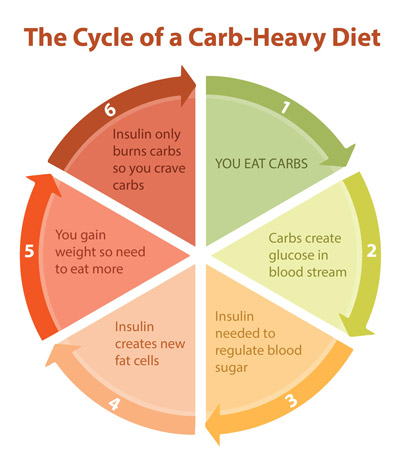Pick up any diet book, and it’ll likely promise the secret to shedding pounds for good. Some insist the key is to eat less and move more, others swear by low-fat plans, and some tell you to cut out carbs entirely. With so many approaches, it’s easy to feel confused. So, what should you believe?
The reality is, there’s no universal solution to long-term, healthy weight loss. Our bodies are all different—what works for one person might not work for you. Factors like genetics, metabolism, health conditions, and lifestyle all play a role in how your body responds to certain foods or diet plans. That means finding a strategy that fits your needs may take time, experimentation, and a bit of trial and error.
Some people thrive on tracking calories or following structured meal plans, while others do better with flexible guidelines, like avoiding fried foods or cutting back on sugar and refined carbs. What matters most is finding a way of eating that feels sustainable, not something that feels like constant punishment or deprivation.
The key isn’t perfection; it’s consistency. If one method doesn’t work for you, that’s okay. Keep exploring and adjusting until you find an approach that supports your health goals and fits your life. And remember: there’s no quick fix. But with patience, self-awareness, and a focus on building a healthier relationship with food, you can take meaningful steps toward reaching and maintaining a healthy weight, on your terms.
Four popular weight loss strategies
1. Cut Calories to Lose Weight—But It’s Not That Simple

Many experts say that weight management boils down to a basic formula: burn more calories than you consume, and you’ll lose weight. On paper, it sounds simple—but in reality, it’s a lot more complicated. Weight loss isn’t a straight, predictable path. In the beginning, cutting calories may lead to noticeable results. But over time, progress often slows down. That’s because as you lose weight, your body also sheds water and lean muscle, not just fat. Your metabolism can slow, and your body begins to adapt, making it harder to continue losing weight at the same pace. To keep the scale moving, you may need to reduce your calorie intake further or adjust your habits.
And not all calories are created equal. Eating 100 calories of soda has a very different impact on your body than 100 calories of vegetables. Foods high in added sugars and refined carbs can spike your blood sugar, leave you feeling unsatisfied, and lead to overeating. The key is to replace empty-calorie foods—like candy, chips, and sugary drinks—with nutrient-dense options that keep you full, such as fruits, vegetables, lean proteins, and whole grains.
It’s also important to recognize that we don’t always eat just to satisfy hunger. Emotional eating—using food to cope with stress, boredom, or sadness—is a common hurdle. Learning to manage these triggers and finding healthier ways to respond can be just as important as watching what you eat.
2. Cut Carbs to Break the Cycle
Another approach to weight loss shifts the focus from calorie counting to how your body processes and stores fat, particularly the role carbohydrates and insulin play.
When you eat carbs, your body breaks them down into glucose (sugar), which enters your bloodstream. To manage this spike in blood sugar, your body releases insulin. Insulin helps shuttle glucose into your cells for energy, but it also does two important things when it comes to fat: it signals your body to store excess energy as fat, and stops fat cells from releasing fat to be burned as fuel. This becomes a problem when your diet is heavy in refined carbs like white bread, pasta, or fries. Frequent spikes in blood sugar lead to constant insulin release, which encourages fat storage and makes it harder for your body to burn existing fat. Plus, as insulin focuses on burning glucose, your body may crave more carbs for quick energy, leading to a cycle of hunger, overeating, and weight gain.
According to this theory, the key to weight loss is reducing your carb intake. By cutting down on carbs—especially processed and sugary ones—you reduce insulin spikes, encourage your body to burn stored fat for energy, and break the cycle of carb cravings. While not everyone responds to a low-carb approach in the same way, many people find it effective, particularly for reducing appetite and improving blood sugar control. As with any eating plan, the most important thing is finding what works best for your body and lifestyle.

3. Cut Fat—But Not All of It

For decades, the go-to advice for losing weight was simple: if you don’t want to get fat, don’t eat fat. As a result, grocery store shelves filled up with low-fat snacks, dairy products, and prepackaged meals. Yet despite all these reduced-fat options, obesity rates have continued to climb. So what went wrong?
The problem is that not all fat is bad, and cutting it out completely can backfire. Healthy fats, like those found in avocados, nuts, seeds, olive oil, tofu, and fatty fish, can support weight loss. These fats help keep you full and satisfied, stabilize your energy, and even improve your mood. A drizzle of olive oil on veggies, for instance, can make a healthy dish more enjoyable—and more likely to become a regular part of your diet.
Many people trying to avoid fat fall into a common trap: swapping fat for sugar and refined carbs. For example, they might reach for low-fat yogurt that’s loaded with added sugar or skip bacon at breakfast, only to grab a sugary muffin. These high-carb, low-fat alternatives can cause blood sugar spikes, increase cravings, and ultimately contribute to weight gain. Rather than cutting fat across the board, focus on avoiding unhealthy fats like trans fats and limiting saturated fats, while embracing sources of healthy, unsaturated fats. It’s not about eating fat-free—it’s about eating smart.
4. Follow the Mediterranean Diet: A Balanced, Sustainable Approach

The Mediterranean diet has long been praised not just for its potential to support weight loss but for its wide-ranging health benefits. This eating style focuses on wholesome, nutrient-rich foods: plenty of fresh fruits and vegetables, whole grains, legumes, nuts, fish, and healthy fats like olive oil. Red meat and dairy are consumed in smaller amounts, and processed foods are kept to a minimum.
But the Mediterranean lifestyle is about more than just what’s on your plate. It encourages mindful eating—taking time to enjoy meals, often with others—and staying active through regular physical movement. This well-rounded approach helps support both physical and emotional well-being.
Unlike many restrictive diets, the Mediterranean diet is flexible, satisfying, and easy to stick with long-term. It promotes balance instead of deprivation, making it easier to maintain motivation and avoid common traps like emotional eating or yo-yo dieting. No matter which weight loss method you choose, the key to lasting success lies in building habits that support your health, your happiness, and your life. The Mediterranean diet offers a strong foundation for doing exactly that.
Stay Motivated on Your Weight Loss Journey

Starting a weight loss journey is about more than just shedding pounds—it’s about creating a healthier, more fulfilling life. To stay motivated, take a moment to reflect on why this goal matters to you. What’s driving your desire for change?
Maybe you want to feel more confident in your skin, have more energy throughout the day, or improve your health for your family’s sake. Whatever your reasons, write them down. Keep that list somewhere visible, as a daily reminder of the bigger picture behind your efforts.
When challenges come up (and they will), revisiting your “why” can help you stay grounded and focused. Motivation doesn’t always stay high, but having a strong purpose can carry you through the tough days and keep you moving forward—one step, one choice, one day at a time.
